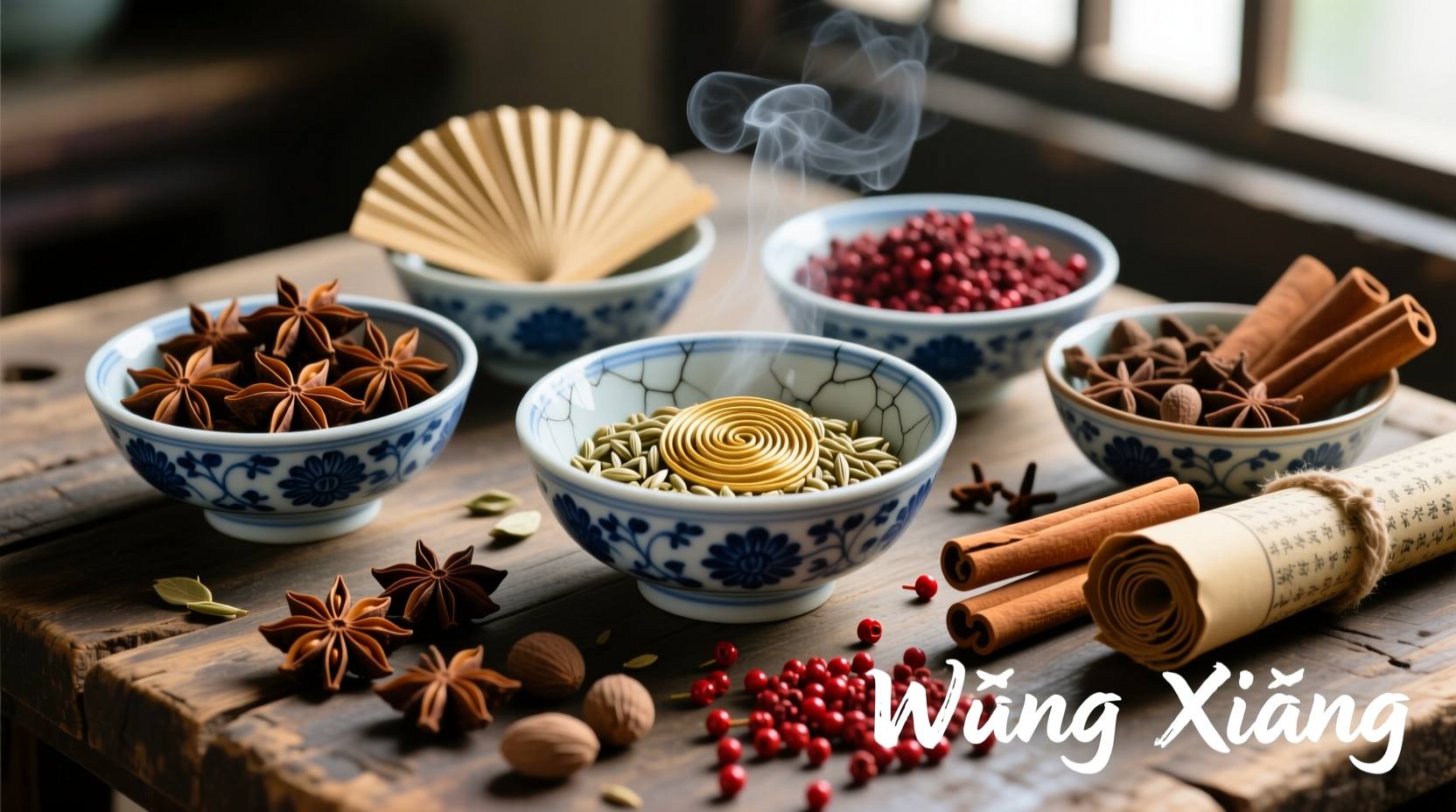Understanding Chinese Five Spice: More Than Just a Seasoning Blend
When you ask what is Chinese five spice, you're exploring one of the most sophisticated flavor systems in global cuisine. Unlike Western spice blends that often focus on heat or single-note flavors, Chinese five spice represents a philosophical approach to cooking—balancing five fundamental tastes (sweet, sour, bitter, salty, and umami) through carefully selected ingredients.
What Exactly Comprises Chinese Five Spice?
The traditional Chinese five spice powder contains precisely five components, each contributing to its distinctive flavor profile:
- Star anise (Illicium verum) - Provides sweet licorice notes
- Cloves (Syzygium aromaticum) - Adds warm, pungent depth
- Chinese cinnamon (Cinnamomum cassia) - Delivers sweet-spicy warmth
- Sichuan peppercorns (Zanthoxylum piperitum) - Creates distinctive tingling sensation
- Fennel seeds (Foeniculum vulgare) - Contributes subtle sweetness
This specific combination isn't arbitrary—it reflects ancient Chinese philosophy where the number five represents fundamental elements of the universe. According to the National Academies Press documentation on traditional Chinese medicine, these spices were selected not only for flavor but also for their balancing properties in the body.
Historical Evolution of the Spice Blend
Chinese five spice originated during the Ming Dynasty (1368-1644) when Chinese culinary traditions began systematizing flavor combinations. Unlike many Western spice blends developed for preservation, Chinese five spice emerged from wuxing (five elements) philosophy that guided traditional Chinese medicine and cooking.
| Historical Period | Development Stage | Key Changes |
|---|---|---|
| Ming Dynasty | Initial formulation | Philosophical alignment with five elements theory |
| Qing Dynasty | Regional variations | Southern versions added ginger, northern versions emphasized Sichuan peppercorns |
| 20th Century | Global adaptation | Western versions sometimes substituted regular pepper for Sichuan peppercorns |
| Modern Era | Authentic revival | Renewed focus on traditional ratios and ingredient quality |
Practical Culinary Applications You Need to Know
Understanding what Chinese five spice is made of matters less than knowing how to use it effectively. Professional chefs recommend:
- For meats: Rub 1-2 teaspoons per pound on pork belly or duck before roasting
- In braises: Add 1 teaspoon to master stock for red-cooked dishes
- With vegetables: Toss roasted root vegetables with 1/2 teaspoon before cooking
- In marinades: Combine with soy sauce, rice wine, and honey for authentic flavor
The USDA's Food Safety and Inspection Service notes that properly stored spices maintain optimal flavor for 6-12 months, which is crucial for preserving Chinese five spice's complex profile.
Authentic Homemade Blend Recipe
Commercial blends often contain fillers or imbalanced ratios. For the most authentic what is Chinese five spice experience, make your own:
- Toast 2 star anise pods, 1 teaspoon Sichuan peppercorns, and 1 teaspoon fennel seeds in a dry skillet for 2 minutes
- Cool completely, then grind with 6 whole cloves and 1-inch piece of Chinese cinnamon bark
- Store in an airtight container away from light
This ratio (2:1:1:1:1 for star anise:cloves:cinnamon:Sichuan pepper:fennel) follows traditional Cantonese preparation methods documented by the Chinese University of Hong Kong's Institute of Chinese Studies.

When and How to Substitute Chinese Five Spice
If you're wondering what is Chinese five spice similar to, understand that no perfect substitute exists due to its unique combination. However, these alternatives work in specific contexts:
- For meat dishes: Combine equal parts cinnamon, allspice, and black pepper with a pinch of cloves
- For vegetarian applications: Use 3 parts fennel seeds, 2 parts star anise, 1 part cinnamon
- Emergency substitute: 1 teaspoon garam masala plus 1/4 teaspoon Sichuan peppercorns
Remember that authentic Chinese five spice contains no chili components—common misconception that affects substitution attempts. The distinctive mouth-numbing quality comes exclusively from genuine Sichuan peppercorns, not from heat-producing chilies.
Proper Storage for Maximum Flavor Longevity
To maintain the delicate balance that defines what Chinese five spice actually is, follow these storage guidelines:
- Store in airtight glass container away from heat and light
- Keep whole spices separately and grind as needed for optimal freshness
- Replace blend every 6 months for peak flavor (sooner in humid climates)
- Never store above the stove or near cooking surfaces
Research from the University of California Cooperative Extension confirms that spices stored properly retain 80% of volatile compounds for 6 months, while improperly stored blends lose significant flavor within weeks.
Avoiding Common Usage Mistakes
Even experienced cooks make these errors with Chinese five spice:
- Overuse: It's potent—start with 1/4 teaspoon per serving and adjust
- Adding too late: Needs time to bloom in oil or liquid for full flavor development
- Using stale blend: Loses complexity quickly—smell before using (should be fragrant)
- Misunderstanding regional variations: Northern Chinese versions use more Sichuan pepper, southern versions emphasize star anise
FAQ: Common Questions About Chinese Five Spice
Is Chinese five spice actually spicy?
No—despite the name, it's not hot like chili peppers. The 'spice' refers to the aromatic components. The Sichuan peppercorns create a tingling sensation (ma la), not heat.
Can I use regular pepper instead of Sichuan peppercorns?
No—this fundamentally changes the blend. Sichuan peppercorns provide the distinctive mouth-numbing quality essential to authentic Chinese five spice. Regular black pepper creates a completely different flavor profile.
Why do some Chinese five spice blends contain ginger?
Traditional formulations don't include ginger. Some commercial blends add it for Western palates. Authentic versions maintain the precise five-ingredient balance reflecting Chinese culinary philosophy.
Does Chinese five spice have health benefits?
Each component has documented properties: star anise contains shikimic acid, cloves have eugenol, and Sichuan peppercorns may aid digestion. However, the blend itself hasn't been studied as a complete mixture for specific health outcomes.











 浙公网安备
33010002000092号
浙公网安备
33010002000092号 浙B2-20120091-4
浙B2-20120091-4